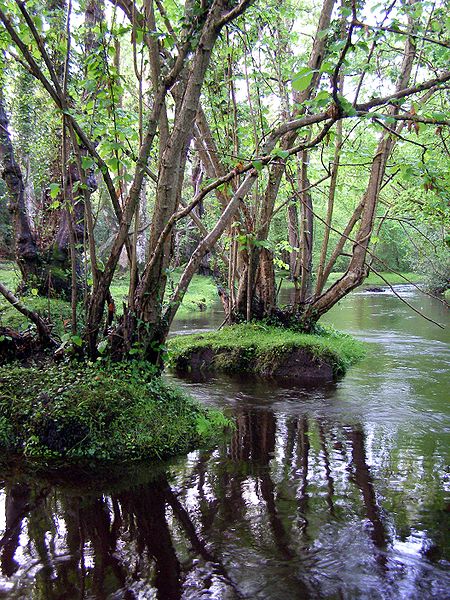
I started the series shortly after the first series ended. It was at that just starting to get big. So, while not the earliest adopter, I got in early. Alright, the series is older now and I have read all of the books. For newcomers to the series it might feel like a daunting task to catch up.
Well, the series isn’t flawless.
Things it does have going for it include a large and well developed world, a multitude of great characters, and the dark, yet optimistic tone. While it is not
Watership Down, there’s a lot of really good stuff here, and several of the later books have made me cry.
There’s also a lot to discuss, since there are lots of questions raised, and the characters face situations that often don’t have easy answers.
However, there are some major turnoffs.
The world has a large scope, but errors are frequent. There are minor ones, like a few misspellings here and there, and then there are major continuity ones. Prequel books will sometimes feature characters who were already dead during the time period of the prequel, or randomly forget a character’s backstory. This can be really frustrating, since you’ll get attached to some characters, only to see everything about them thrown out because the authors forget important information about them.
The book is written by six women, together Erin Hunter, and problems like this can be expected.
An editor’s job would be to keep continuity straight.
They don’t.
For example, many warriors turned medicine cats end up being shown as medicine cats in their youth.) Also, some characters are overexposed and there are sometimes pacing problems.
Overall, I’d say the good outweighs the bad, and I would strongly recommend the series, but be prepared to have some frustration along with your enjoyment of it. Also, skip Leafpool’s Wish.
Leafpool’s Wish isn’t because it’s bad by any means, but rather that it doesn’t include any important information we don’t learn by reading the main series. It’s basically about Leafpool convincing Squirrelflight to help her.
It’s not worth reading unless you have an investment in either of the characters.
 I don’t know if you have noticed but the dinosaurs in Jurassic Park have never been what science would call accurate.
When you go into a JP movie you are going there to see “real” dinosaur come to life. Just like you aren’t going to see any other Hollywood give you a look at reality with its other offerings.
Yet I have heard from a number of people that they want accuracy for the movie, if only to “enlighten the general public.”
The general public are exactly the people who would be turned off by a raptor that’s 3 feet tall and feathered. If you want accuracy from the world you will need to read the book.
Michael Crichton did a lot of research going into writing the original Jurassic Park. Every decision he made was based off of something he found in his research; even the Velociraptor-Deinonychus name change was based on a hypothesis that Deinonychus was another species of Velociraptor.
Though that hypothesis was later disproven, but still, that’s where it came from.
I think Crichton was of two minds– for one thing, he favored research and he himself felt obligated to go through painstaking details to bring his story to life.
However, he also knew that audiences expected entertainment and ultimately they were looking for entertainment first before learning about dinosaur accuracy. For as much research as Crichton put into his work, he also indulge
I don’t know if you have noticed but the dinosaurs in Jurassic Park have never been what science would call accurate.
When you go into a JP movie you are going there to see “real” dinosaur come to life. Just like you aren’t going to see any other Hollywood give you a look at reality with its other offerings.
Yet I have heard from a number of people that they want accuracy for the movie, if only to “enlighten the general public.”
The general public are exactly the people who would be turned off by a raptor that’s 3 feet tall and feathered. If you want accuracy from the world you will need to read the book.
Michael Crichton did a lot of research going into writing the original Jurassic Park. Every decision he made was based off of something he found in his research; even the Velociraptor-Deinonychus name change was based on a hypothesis that Deinonychus was another species of Velociraptor.
Though that hypothesis was later disproven, but still, that’s where it came from.
I think Crichton was of two minds– for one thing, he favored research and he himself felt obligated to go through painstaking details to bring his story to life.
However, he also knew that audiences expected entertainment and ultimately they were looking for entertainment first before learning about dinosaur accuracy. For as much research as Crichton put into his work, he also indulge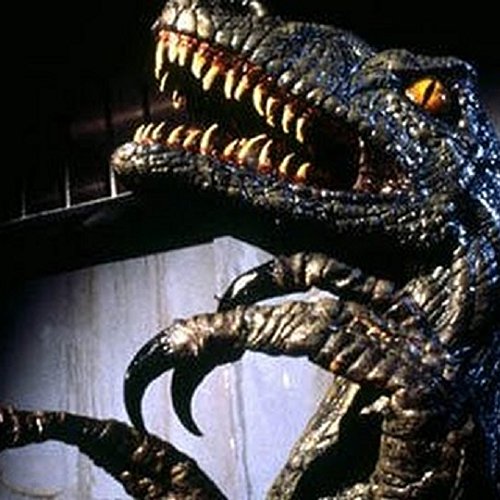 d the truth quite a bit for thematic purposes.
If he wrote Jurassic Park in the present day, I can guarantee the raptors would be feathered and the dinosaurs overall would be far more bird like.
Most people don’t care about being knowledgeable about dinosaurs, truthfully. And the fact is that every single JP movie, even the worst and least accurate ones, has contributed to getting a bunch of little kids hooked on dinosaurs where they will learn on their own what’s real and what isn’t.
Bottom line is, just because the original JP was nice enough to provide fairly accurate (for its time) dinosaurs, and is a science fiction movie th
d the truth quite a bit for thematic purposes.
If he wrote Jurassic Park in the present day, I can guarantee the raptors would be feathered and the dinosaurs overall would be far more bird like.
Most people don’t care about being knowledgeable about dinosaurs, truthfully. And the fact is that every single JP movie, even the worst and least accurate ones, has contributed to getting a bunch of little kids hooked on dinosaurs where they will learn on their own what’s real and what isn’t.
Bottom line is, just because the original JP was nice enough to provide fairly accurate (for its time) dinosaurs, and is a science fiction movie th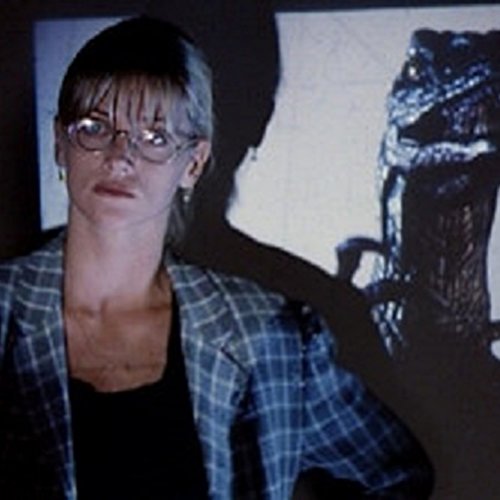 at leans hard into the science aspect, doesn’t mean they ‘owe’ us scientifically-accurate dinosaurs.
Jurassic Park was praised for when it came out, both the book and the movie: for such an updated look at how dinosaurs behaved and looked.
Wouldn’t you say the series has a standard to live up to in that regard?
To live up to Crichton’s hard research and creative work that spawned from that research?
I do.
~XO
at leans hard into the science aspect, doesn’t mean they ‘owe’ us scientifically-accurate dinosaurs.
Jurassic Park was praised for when it came out, both the book and the movie: for such an updated look at how dinosaurs behaved and looked.
Wouldn’t you say the series has a standard to live up to in that regard?
To live up to Crichton’s hard research and creative work that spawned from that research?
I do.
~XO 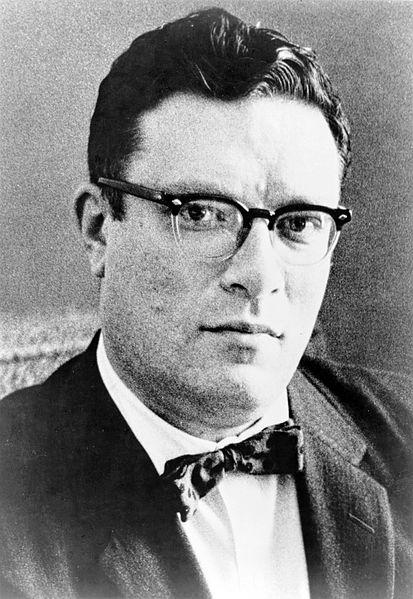 Long ago, when I was a tiny 3rd grader, I was pestering my father for book recommendations, having finished whatever juvenile series I was reading at the time.
He took me down to the basement, to pick a book from his library.
It set a Foundation.
Foundation was one of those books that was prominently placed in his library.
It had an interesting cover so I picked it up and I was hooked by the first paragraph. I’ve ready every work of non-fiction by Asimov since then.
Out of the hundreds of sci-fi and fantasy books there, Asimov represented by far the largest component.
He had almost a hundred different Asimov books, and even more now. Obviously, my dad beelined for the Asimov section and looked for one he knew would appeal to me.
I was given one of the Fantasy and Science Fiction collections, maybe the Planet that Wasn’t or Only a Trillion, and I subsequently devoured all the other ones we had.
I was already hooked on Asimov before I even started reading Asimov!
~XO
Long ago, when I was a tiny 3rd grader, I was pestering my father for book recommendations, having finished whatever juvenile series I was reading at the time.
He took me down to the basement, to pick a book from his library.
It set a Foundation.
Foundation was one of those books that was prominently placed in his library.
It had an interesting cover so I picked it up and I was hooked by the first paragraph. I’ve ready every work of non-fiction by Asimov since then.
Out of the hundreds of sci-fi and fantasy books there, Asimov represented by far the largest component.
He had almost a hundred different Asimov books, and even more now. Obviously, my dad beelined for the Asimov section and looked for one he knew would appeal to me.
I was given one of the Fantasy and Science Fiction collections, maybe the Planet that Wasn’t or Only a Trillion, and I subsequently devoured all the other ones we had.
I was already hooked on Asimov before I even started reading Asimov!
~XO 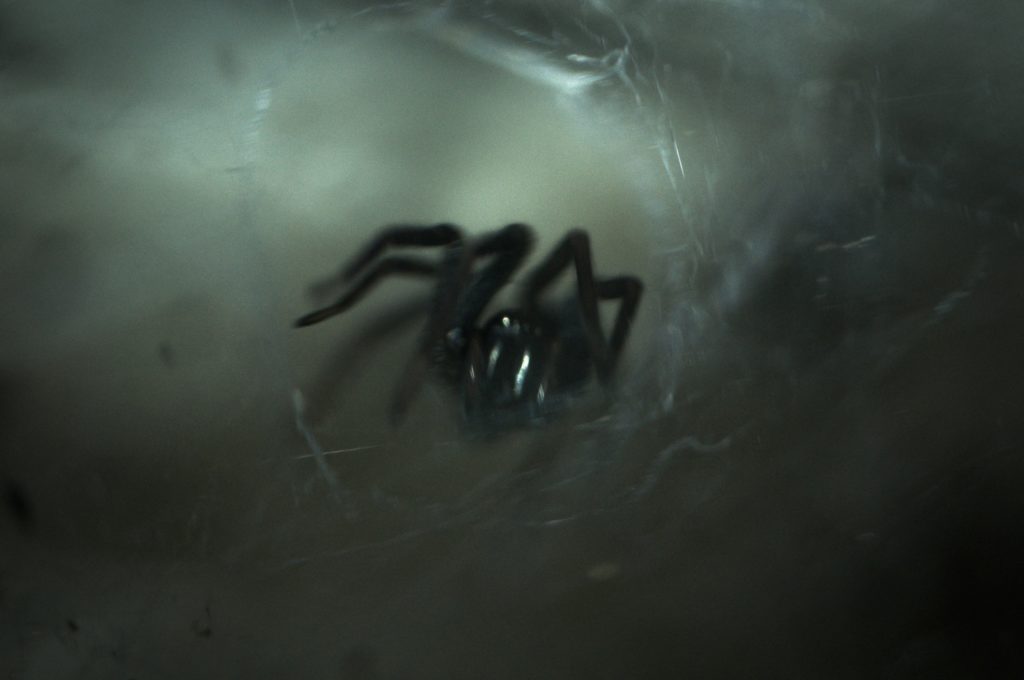
 I started the series shortly after the first series ended. It was at that just starting to get big. So, while not the earliest adopter, I got in early. Alright, the series is older now and I have read all of the books. For newcomers to the series it might feel like a daunting task to catch up.
Well, the series isn’t flawless.
Things it does have going for it include a large and well developed world, a multitude of great characters, and the dark, yet optimistic tone. While it is not Watership Down, there’s a lot of really good stuff here, and several of the later books have made me cry.
There’s also a lot to discuss, since there are lots of questions raised, and the characters face situations that often don’t have easy answers.
However, there are some major turnoffs.
The world has a large scope, but errors are frequent. There are minor ones, like a few misspellings here and there, and then there are major continuity ones. Prequel books will sometimes feature characters who were already dead during the time period of the prequel, or randomly forget a character’s backstory. This can be really frustrating, since you’ll get attached to some characters, only to see everything about them thrown out because the authors forget important information about them.
The book is written by six women, together Erin Hunter, and problems like this can be expected.
An editor’s job would be to keep continuity straight.
They don’t.
For example, many warriors turned medicine cats end up being shown as medicine cats in their youth.) Also, some characters are overexposed and there are sometimes pacing problems.
Overall, I’d say the good outweighs the bad, and I would strongly recommend the series, but be prepared to have some frustration along with your enjoyment of it. Also, skip Leafpool’s Wish.
Leafpool’s Wish isn’t because it’s bad by any means, but rather that it doesn’t include any important information we don’t learn by reading the main series. It’s basically about Leafpool convincing Squirrelflight to help her.
It’s not worth reading unless you have an investment in either of the characters.
I started the series shortly after the first series ended. It was at that just starting to get big. So, while not the earliest adopter, I got in early. Alright, the series is older now and I have read all of the books. For newcomers to the series it might feel like a daunting task to catch up.
Well, the series isn’t flawless.
Things it does have going for it include a large and well developed world, a multitude of great characters, and the dark, yet optimistic tone. While it is not Watership Down, there’s a lot of really good stuff here, and several of the later books have made me cry.
There’s also a lot to discuss, since there are lots of questions raised, and the characters face situations that often don’t have easy answers.
However, there are some major turnoffs.
The world has a large scope, but errors are frequent. There are minor ones, like a few misspellings here and there, and then there are major continuity ones. Prequel books will sometimes feature characters who were already dead during the time period of the prequel, or randomly forget a character’s backstory. This can be really frustrating, since you’ll get attached to some characters, only to see everything about them thrown out because the authors forget important information about them.
The book is written by six women, together Erin Hunter, and problems like this can be expected.
An editor’s job would be to keep continuity straight.
They don’t.
For example, many warriors turned medicine cats end up being shown as medicine cats in their youth.) Also, some characters are overexposed and there are sometimes pacing problems.
Overall, I’d say the good outweighs the bad, and I would strongly recommend the series, but be prepared to have some frustration along with your enjoyment of it. Also, skip Leafpool’s Wish.
Leafpool’s Wish isn’t because it’s bad by any means, but rather that it doesn’t include any important information we don’t learn by reading the main series. It’s basically about Leafpool convincing Squirrelflight to help her.
It’s not worth reading unless you have an investment in either of the characters.  My boyfriend has a red beard, I’ll tease him about being Red Beard the Pirate, which compliments my redhead quite well.
Other than that he has dark hair. Which he thinks of as odd, but actually it is quite common. There are different genes for red hair on your head versus red hair in your beard (if you’re a guy, girls get it lasered), and the genes for red beards are much more common than red heads.
Look closely at guys’ beards; you’ll often find they’re sort of calico, a mix of black and brown and red and white and grey.
This kind of mix is very common.
My boyfriend has a red beard, I’ll tease him about being Red Beard the Pirate, which compliments my redhead quite well.
Other than that he has dark hair. Which he thinks of as odd, but actually it is quite common. There are different genes for red hair on your head versus red hair in your beard (if you’re a guy, girls get it lasered), and the genes for red beards are much more common than red heads.
Look closely at guys’ beards; you’ll often find they’re sort of calico, a mix of black and brown and red and white and grey.
This kind of mix is very common. 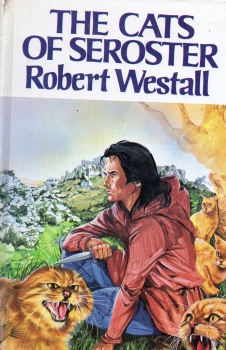 The book is essentially a fantasy for older children. But a fun read non-the-less.
The closest comparison I can think of right now is
The book is essentially a fantasy for older children. But a fun read non-the-less.
The closest comparison I can think of right now is  It’s one of the most enlightening, well-written books I’ve ever encountered in my life.
It’s a non-fiction adventure-travelogue by a rogue National Geographic explorer hiking all over the Himalayas with a mystic sherpa looking for Shangri-La, dealing with shady porters, leeches, local weirdos, sickness, and, of course, the Chinese Army.
It reads like Survivorman Les Stroud meets Rudyard Kipling crossed with Indiana Jones.
It’s pretty much my personal Bible, or would be if I were religious.
It’s one of the most enlightening, well-written books I’ve ever encountered in my life.
It’s a non-fiction adventure-travelogue by a rogue National Geographic explorer hiking all over the Himalayas with a mystic sherpa looking for Shangri-La, dealing with shady porters, leeches, local weirdos, sickness, and, of course, the Chinese Army.
It reads like Survivorman Les Stroud meets Rudyard Kipling crossed with Indiana Jones.
It’s pretty much my personal Bible, or would be if I were religious.  If you have seen Soylent Green, you’ll most certainly know “it’s people!” The film is based off of Harry Harrison’s 1966 science fiction novel Make Room. In the novel, soylent is made from soya and lentils.
Yet you will see tons of reference made to the title along with cannibal jokes. I’m pretty sure most people making the joke have never seen the film. Nor do they even know that it is based on Make Room, let along that the original novel didn’t feature cannibalism at all.
And now this…
The first time someone linked me to Soylent’s website, I seriously thought it was some promotion / ARG / viral marketing thing for a Soylent Green movie remake, modernizing the story with meal replacement shakes instead of crackers.
I honestly hoped that it was some promotion / ARG / viral marketing thing for a Soylent Green movie remake!
I think at the time you couldn’t just buy it out a store on the website, you had to sign up for a mailing list, so that helped it not look like a real product.
I’m not a fan of the name either. The name is too ingrained in popular culture to be taken seriously and it leaves a bad after taste since more people will be aware of the film than the novel.
It definitely succeeds in getting your attention and generating buzz, I’ll give it that. An interesting name,
If you have seen Soylent Green, you’ll most certainly know “it’s people!” The film is based off of Harry Harrison’s 1966 science fiction novel Make Room. In the novel, soylent is made from soya and lentils.
Yet you will see tons of reference made to the title along with cannibal jokes. I’m pretty sure most people making the joke have never seen the film. Nor do they even know that it is based on Make Room, let along that the original novel didn’t feature cannibalism at all.
And now this…
The first time someone linked me to Soylent’s website, I seriously thought it was some promotion / ARG / viral marketing thing for a Soylent Green movie remake, modernizing the story with meal replacement shakes instead of crackers.
I honestly hoped that it was some promotion / ARG / viral marketing thing for a Soylent Green movie remake!
I think at the time you couldn’t just buy it out a store on the website, you had to sign up for a mailing list, so that helped it not look like a real product.
I’m not a fan of the name either. The name is too ingrained in popular culture to be taken seriously and it leaves a bad after taste since more people will be aware of the film than the novel.
It definitely succeeds in getting your attention and generating buzz, I’ll give it that. An interesting name,  Water tables rely on the rainfall to be recharged, and move up/down with the rainfall. Moreover, the water in the ground spends a varying amount of time there depending on the rock properties and depth – this time is the residence time.
For a small pocket of water in the ground (a small aquifer), the well could empty it pretty easily. If the residence time is also very high, this means it takes a long time to return to normal.
Water tables is they will erode the ground around the top of the table, particularly if it fluctuates slightly.
This creates caves and channels under ground, underground streams and such. If the water table then drops the tunnels will be left dry and we know them as caves.
For the city of London in the UK, when they first tapped into the water below, it sprayed out of the well it was under that much pressure. But, with time, more water has been taken out than has recharged, so the water level has fallen and so too has the pressure.
Today, the water has to be pumped up as it is that much below the surface.
Most of Central Florida gets their drinking water from underground aquifers. When depleted faster then rain can fill them up it messes up the whole water table for the area leaving pockets in the limestone underground.
In Central Florida you have sinkholes because of this depletion. Heavy rainfall doesn’t just automatically refill the water table, in fact it takes a lot of time. This is something I wish the general public had a better understanding of.
As such, excessive extraction of water creates a reduction in the water table locally, known as a cone of depression.
Our rivers act in much the same way.
You can see how a river is flowing really heavily after rainfall, but continues to flow strongly for even a couple days afterwards because the river level is kept high not just by the water up stream, but also the water in the ground seeping into the river. In more arid countries, such as in parts of Spain, the rain can be so little at times that the river dries up completely for parts of the year.
One final cause of a well drying up is if the rock itself needed the water to stay intact.
By draining it, the rock may collapse in on itself, closing the little gaps (pores) that the water used to be in. This removes any room for water and can even create a barrier to flow elsewhere. While this is nowhere near as common, it is an important factor in groundwater usage and has even led to devastating subsidence.
Water tables rely on the rainfall to be recharged, and move up/down with the rainfall. Moreover, the water in the ground spends a varying amount of time there depending on the rock properties and depth – this time is the residence time.
For a small pocket of water in the ground (a small aquifer), the well could empty it pretty easily. If the residence time is also very high, this means it takes a long time to return to normal.
Water tables is they will erode the ground around the top of the table, particularly if it fluctuates slightly.
This creates caves and channels under ground, underground streams and such. If the water table then drops the tunnels will be left dry and we know them as caves.
For the city of London in the UK, when they first tapped into the water below, it sprayed out of the well it was under that much pressure. But, with time, more water has been taken out than has recharged, so the water level has fallen and so too has the pressure.
Today, the water has to be pumped up as it is that much below the surface.
Most of Central Florida gets their drinking water from underground aquifers. When depleted faster then rain can fill them up it messes up the whole water table for the area leaving pockets in the limestone underground.
In Central Florida you have sinkholes because of this depletion. Heavy rainfall doesn’t just automatically refill the water table, in fact it takes a lot of time. This is something I wish the general public had a better understanding of.
As such, excessive extraction of water creates a reduction in the water table locally, known as a cone of depression.
Our rivers act in much the same way.
You can see how a river is flowing really heavily after rainfall, but continues to flow strongly for even a couple days afterwards because the river level is kept high not just by the water up stream, but also the water in the ground seeping into the river. In more arid countries, such as in parts of Spain, the rain can be so little at times that the river dries up completely for parts of the year.
One final cause of a well drying up is if the rock itself needed the water to stay intact.
By draining it, the rock may collapse in on itself, closing the little gaps (pores) that the water used to be in. This removes any room for water and can even create a barrier to flow elsewhere. While this is nowhere near as common, it is an important factor in groundwater usage and has even led to devastating subsidence.